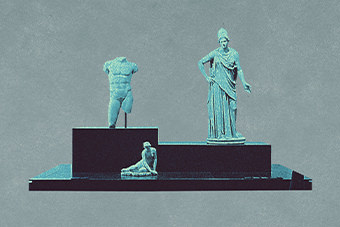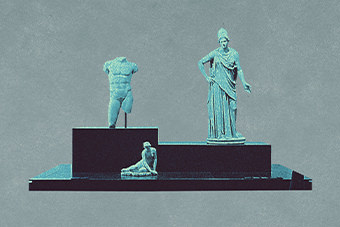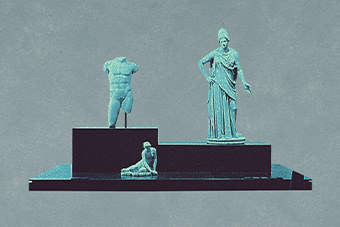After Bihar separated from Bengal in 1912, it was proposed that there should be a separate museum in Bihar representing its history. The then state government appointed a committee to work out a scheme for the establishment of a provincial museum in Patna. Following this decision, Patna Museum was inaugurated in the year 1917 by Sir Edward Gait in a small room of the Patna High Court. The land for the construction of Patna Museum was allotted in 1925 and was completed in December 1928. It was designed by Rai Bahadur Vishnuswaroop in Indo-Saracenic style of architecture. The most remarkable feature is the Chattri over the centre, domes over the four corners, and the windows in the style of jharokhas. The museum was opened to the public in 1929 by Sir Stephenson, the then governor of Bihar and Orissa.
Before the construction of Bihar Museum in 2015, Patna Museum housed over 75000 antiquities, including more than 4000 terracotta and stone sculptures, and 28000 coins ranging from punched marked to British-era coins. Once Bihar Museum was built, it was decided that antiquities till 1764 would be transferred here, and the antiquities that refer to the post-1765 era would be on display at the Patna Museum. The museum possesses ‘Relics Casket of Buddha’ procured from Vaishali, from the earliest earthen Stupa built by the Lichchavies immediately after the death of Buddha during 600 BC. This is among the most valuable collections of the Patna Museum.
Other highlights of the museum are its National History Gallery, Dr Rajendra Prasad Gallery, the Geological gallery that houses India’s longest fossil tree (which is 53 ft long and 200 million years old), and a Persian manuscript called Shahnama. The highly lustred stone torso of a Jain Tirthankar from Lohanipur (Patna) is the earliest example of Jain art. The earliest Mauryan lion head from Masarh (Bhojpur) and the bull capital from Hajipur of Mauryan period are also worth a mention.
More Information
Getting there
Average duration of visit
3-4 hours
Museum administered by
State Government
Person in charge
Website
Updated
Quick Facts
Address:
Buddh Marg Lodipur
Visiting Time:
Sunday: 10.30 am - 4.30 pm
Monday: Closed
Tuesday: 10.30 am - 4.30 pm
Wednesday: 10.30 am - 4.30 pm
Thursday: 10.30 am - 4.30 pm
Friday: 10.30 am - 4.30 pm
Saturday: 10.30 am - 4.30 pm
The Museum remains closed on public holidays
Phone:
9798214909Entry Fees:
Adults INR 15/-
Students INR 5/-
Foreigners INR 250/-
Buddha Relics Gallery Fee
(a) Indians: Rs100
(b) Foreigners: Rs 500
2) Camera Charges
(a) Mobile Camera: Rs 20
(b) Flash Camera: Rs 100
(c) Videography: Rs 500




